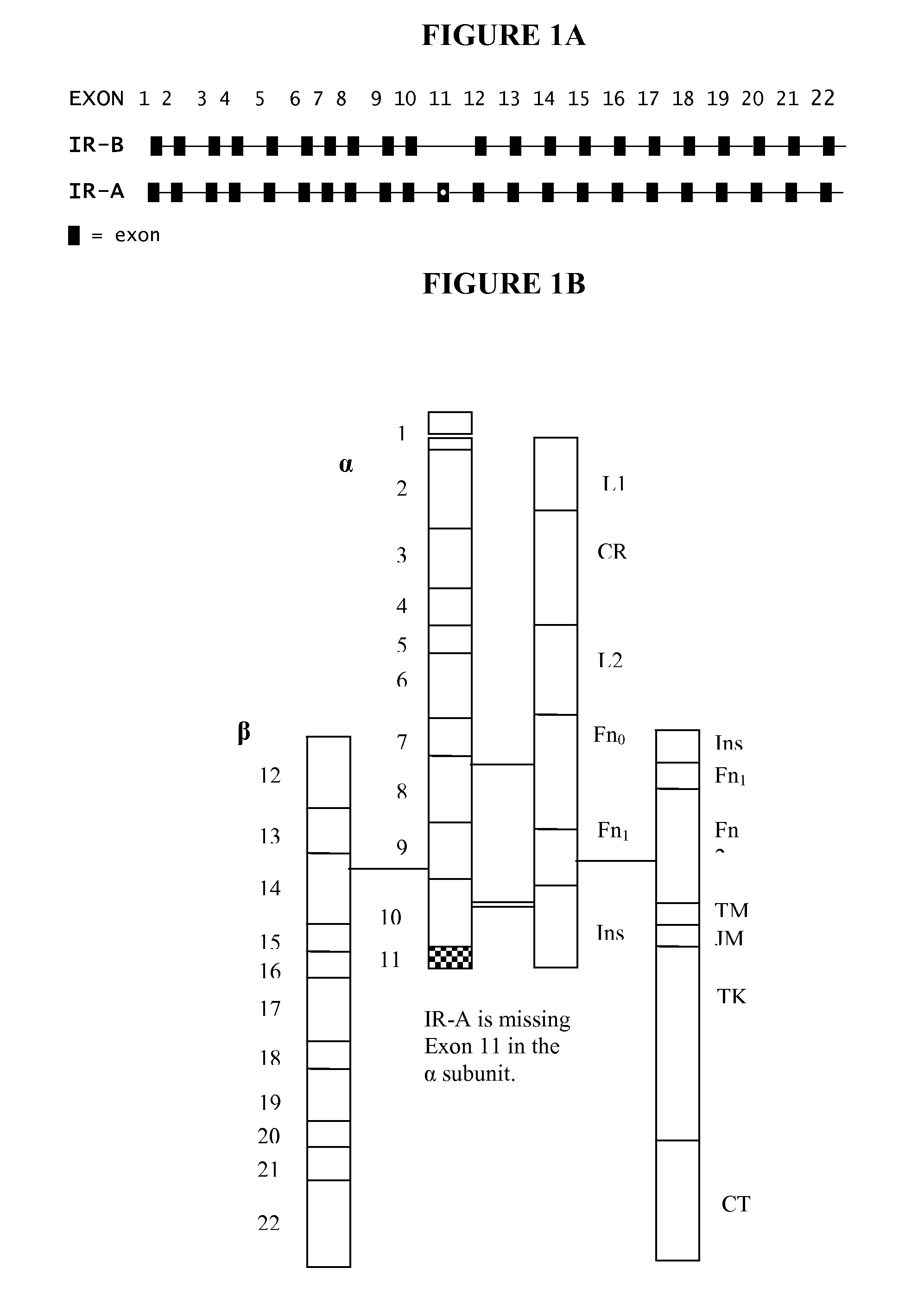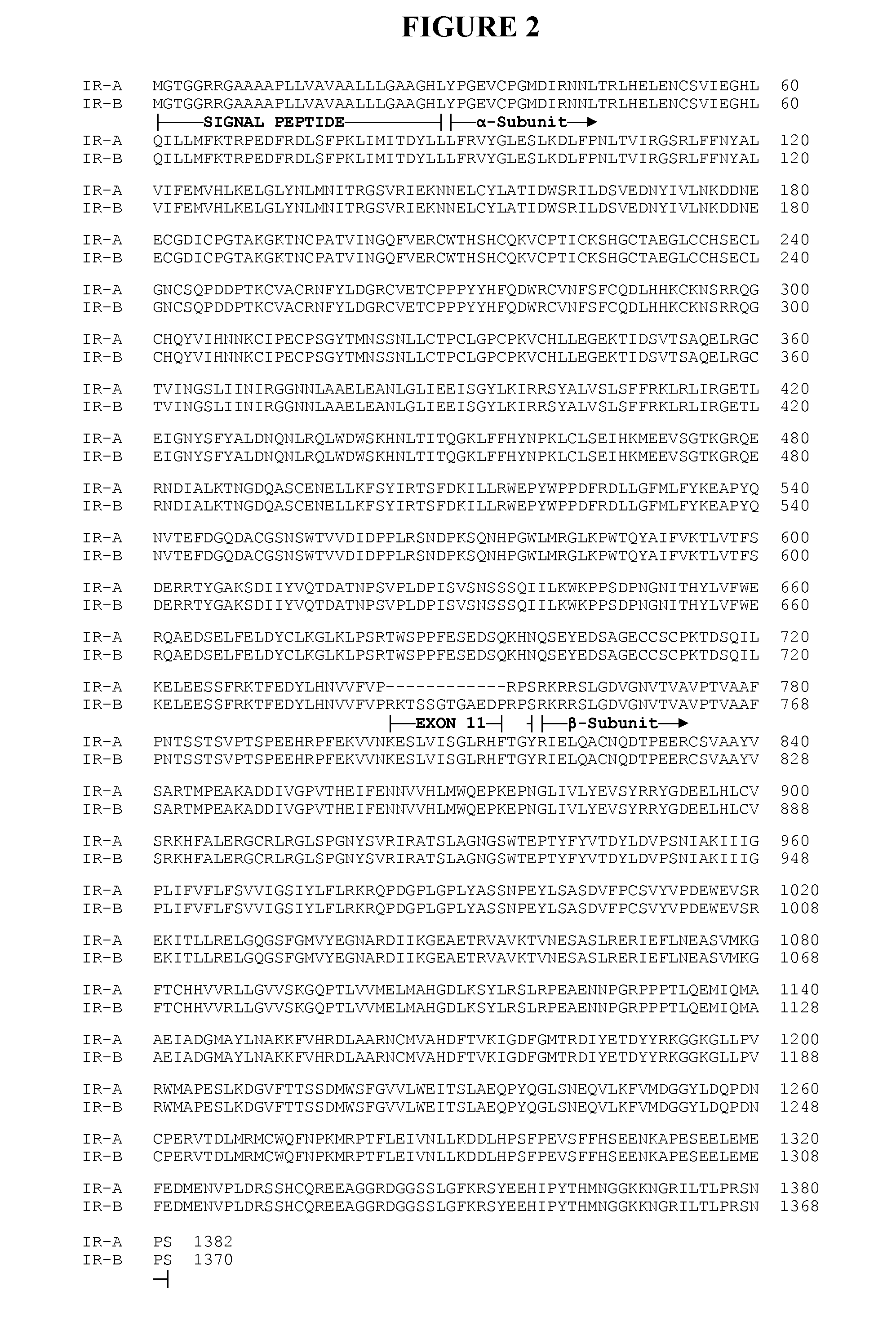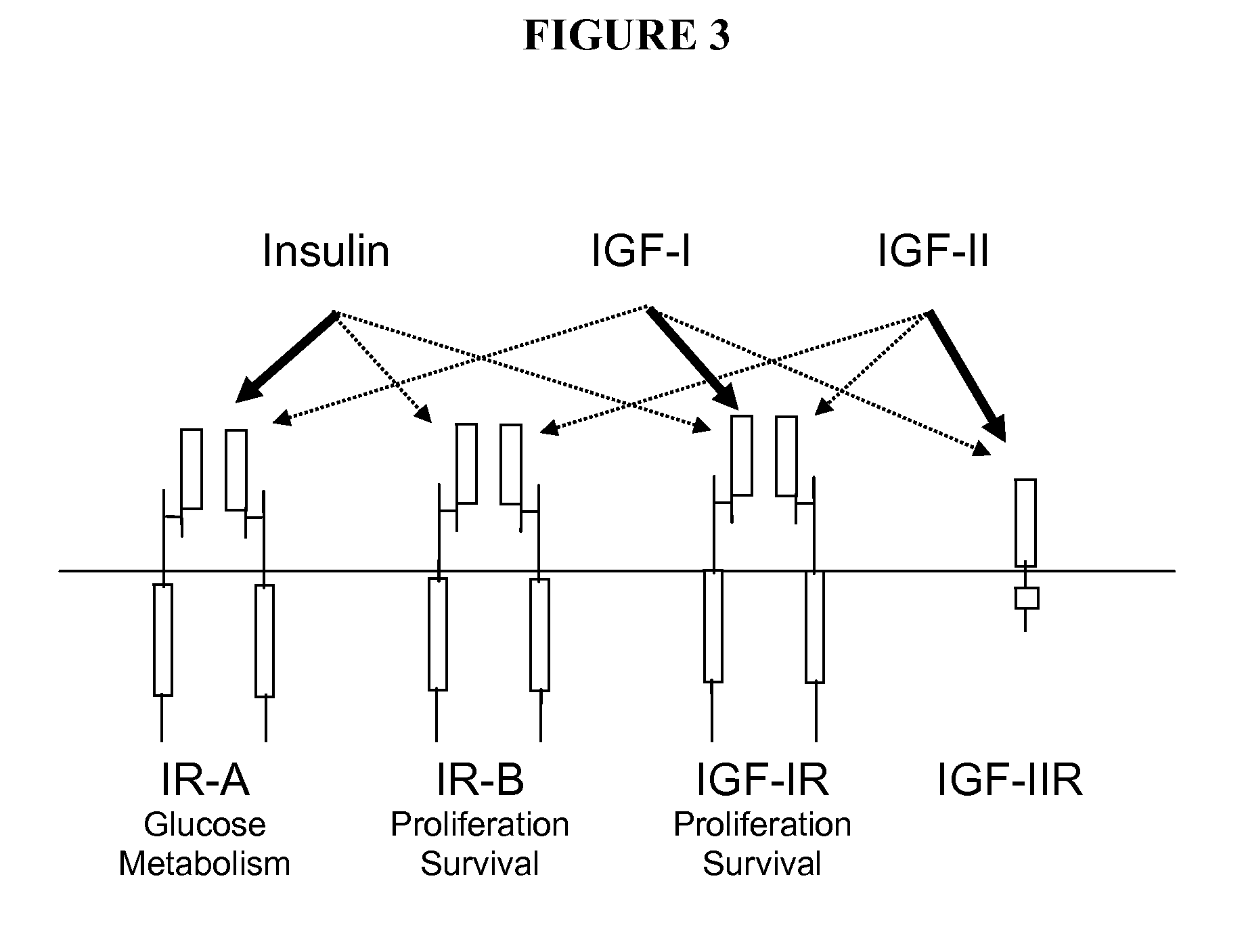Quantification of IR-A and IR-B for Tumor Classification
a tumor and ira technology, applied in the field of quantitative ira and irb for tumor classification, can solve the problems of affecting the accuracy of tumor classification, and affecting the quality of tumor classification, so as to maximize the therapeutic benefit of the patient and accurately detect and quantify the expression.
- Summary
- Abstract
- Description
- Claims
- Application Information
AI Technical Summary
Benefits of technology
Problems solved by technology
Method used
Image
Examples
example 1
IR-A and IR-B Primer and Probe Design
[0264]Commercially purchased assays were unable to distinguish and quantify IR-A and IR-B expression. Thus, novel probes were required. Mature mRNA transcript sequences for the insulin receptor (INSR) short (NM 001079817) and long (NM 000208) isoforms were obtained from the National Center for Biotechnology Information (NCBI) Entrez Nucleotide database. The INSR short isoform is designated as IR-A and the INSR long isoform as IR-B. The difference between the two isoforms is the presence (in IR-B) or absence (in IR-A) of exon 11, a 36 nucleotide region, in the mature transcript. Exon 11 is absent in the IR-A form, while the IR-B form contains the exon 11 sequence in the mature mRNA transcript. For the design of primers and probes that are specific for the detection of IR-A mRNA, the exon 10 / 12 junction region was targeted for the gene specific probe. Several primer pairs (forward and reverse) located within the exon 10 or exon 12 coding regions, r...
example 2
Specificity of the Primers and Probes
[0265]Commercially available plasmids containing full length cDNA clones for the INSR long (clone SC311328) and short (clone SC315880) transcripts were purchased from OriGene Technologies, Inc. Sequence verification of each INSR clone was conducted. All TaqMan Gene Expression assay designs were tested for specificity and sensitivity in the presence of either the INSR long or short isoform clones at various copy number inputs (102-107 copies). Standard TaqMan Gene Expression assays were conducted in a 384-well format for all primer / probe and template combinations. Reactions consisted of 7.5 μL of TaqMan Universal Master Mix, 1.5 μL of 10× Gene Expression Assay Mix, and 6 μL of varying copy numbers of either the INSR long or short form cDNA clone, for a final volume of 15 μL per well of a 384-well plate. Each primer / probe and template combination was repeated at least 3 times. All assay plates were run on an Applied Biosystems 7900HT detection syst...
example 3
Expression Profiling in Breast Cancer Patients
A. General Methodology
[0274]Forty-two grade Ito III infiltrating breast ductal carcinomas were purchased from ILSbio (Chestertown, Md.). 19 matched normal adjacent breast tissue samples were also procured. The ages of patients ranged from 31 to 88 years. All the breast cancer samples are ER and PR positive and HER2 negative according IHC. All samples were fresh frozen and collected before initiation of any treatment. Tumor samples were macrodissected to remove normal tissue and the normal samples were macrodissected to remove non-glandular tissue. After macrodissection, the tumor purity in all samples is greater than 85%.
[0275]Four breast cancer tissue qPCR cDNA arrays (BCRT101, BCRT102, BCRT103, BCRT104) were purchased from OriGene Technologies (Rockville, MD). The qPCR arrays contain cDNAs from 15 normal breast tissues (from 10 unique donors) and 165 breast adenocarcinoma tissues. The tumor stage varied from stage Ito IV and the tissue...
PUM
| Property | Measurement | Unit |
|---|---|---|
| temperature | aaaaa | aaaaa |
| volume | aaaaa | aaaaa |
| temperature | aaaaa | aaaaa |
Abstract
Description
Claims
Application Information
 Login to View More
Login to View More - R&D
- Intellectual Property
- Life Sciences
- Materials
- Tech Scout
- Unparalleled Data Quality
- Higher Quality Content
- 60% Fewer Hallucinations
Browse by: Latest US Patents, China's latest patents, Technical Efficacy Thesaurus, Application Domain, Technology Topic, Popular Technical Reports.
© 2025 PatSnap. All rights reserved.Legal|Privacy policy|Modern Slavery Act Transparency Statement|Sitemap|About US| Contact US: help@patsnap.com



